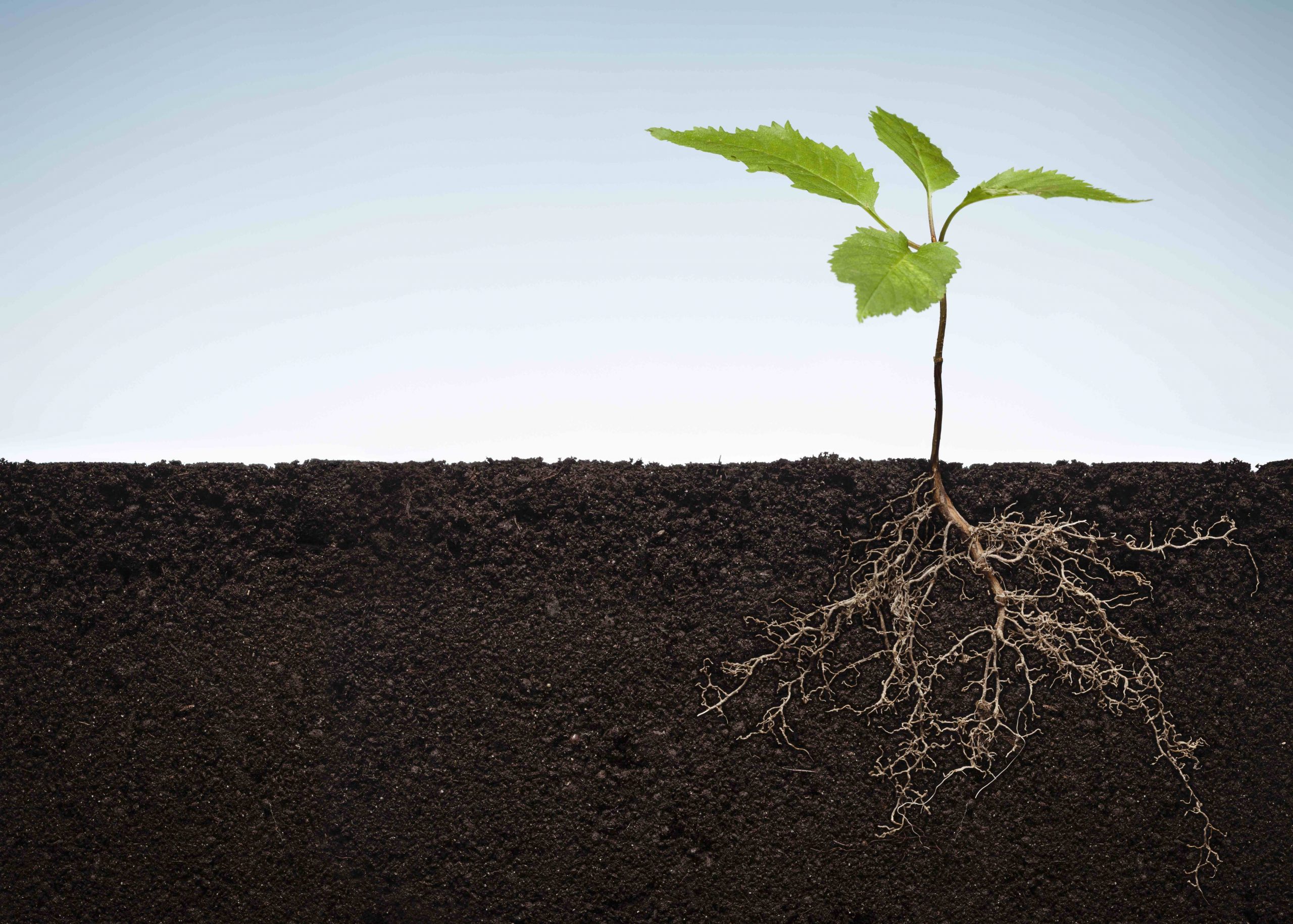
November 11, 2022, by Lexi Earl
Soils and decarbonisation: What future for agriculture?
It is decarbonization day at COP27 today. One of the ways to reduce carbon is capturing it in the soil. Soils are hugely important for our futures here on this planet. But how do soils capture carbon? And how can we develop agricultural practices that better support carbon sequestration in soils? In this post, Malcolm Bennett, Gabriel Castrillo and Sacha Mooney discuss their research into soils and the potentialities for future agriculture.
Research at the University of Nottingham is developing novel ways to support better crop production through focusing on the rhizosphere – the thin layer of soil directly in contact with roots – and soil microorganisms that form the root microbiome. Plant roots are incredibly important for plant growth and development, but as the climate changes, the resilience of plants to withstand extreme temperatures, droughts or flooding are being challenged. By focusing on soils, and the plant roots within, we can better prepare agriculture for a challenging future – ensuring resilient crop yields and good crop health. Soils also have the potential to capture carbon, making our understanding of rhizosphere processes even more important.
Understanding roots in compacted soils
Soil compaction is a challenge for modern farming, particularly in Europe where over half the arable land is prone to this stress. Poor soil management practices such as use of heavy machinery, causes soil to become compacted, making it difficult for roots to penetrate deeper layers rich in moisture and nutrients. This has consequences for the ability of plants to take up these important resources, resulting in decreased yields (up to 25%). When combined with drought, soil compaction can reduce crop yields by up to 75%.
Understanding why roots struggle to penetrate hard soils is the focus of work undertaken by Bipin Pandy, Malcolm Bennett, Sacha Mooney and their teams. Until recently, roots that failed to penetrate hard soils were considered too weak to do so but their research has discovered a plant hormone signal, which causes roots to stop growing further into the soil. The signal called ethylene is released as a gas from the tips of plant roots into the soil. In loose, uncompacted soils the gas is able to diffuse away from root tips easily. But in hard, compacted soils, the ethylene becomes trapped around the root tip, causing ethylene to build up in root tissues. This build up then prompts roots to stop growing in the compacted soil, hence ethylene acts as a ‘stop’ signal for root growth during these soil stress conditions.
Experimenting with specific plant mutations allowed researchers to understand that roots no longer able to detect ethylene were now able to penetrate compacted soils. Experiments were conducted in sandy and clay soils, and on rice and Arabidopsis (a model plant species closely related to oil seed rape). These findings suggest that, because the same behaviour was observed in different soils and different plant species, reducing ethylene sensing in roots would be of benefit to other crops, soil types and geographies. This opens up opportunities for plant breeders to screen for plant varieties whose roots are less sensitive to ethylene. There is also the opportunity to use genetic engineering or gene editing to selectively block ethylene responses in root tips, as this hormone signal is important for other plant processes like pathogen resistance.
There are a number of benefits from this work for the future of agriculture.
- Crop roots are able to access nutrients deeper in the soil, supporting the growth of larger, healthier crops.
- Crop varieties with extensive roots systems are able to secure deeper and more reliable water sources, making them more resilient to withstand periods of drought.
- Modelling suggests that crops with deeper roots bury more carbon in the soil, facilitating efforts to sequester carbon from the atmosphere.
Soils and microbes
The ability of plants to take up the correct amount of nutrients from the soil is hugely important for growth and energy. Gabriel Castrillo and his team discovered that plants have a ‘sealing’ mechanism supported by microbes in the root, vital for the intake of nutrients. This mechanism controlling root sealing influences the composition of microbial communities inhabiting the root, and the microbes then maintain the function of this mechanism – a beneficial symbiotic relationship. Up until now, the contribution of microbes to the function of regulatory mechanisms of nutrient diffusion in plant roots was unknown.
All living organisms have evolved structures to maintain stable mineral nutrient states. In plant roots, these structures comprise specialised cell layers that function as gatekeepers to control the transfer of water and vital nutrients. Cells forming these layers must be sealed together in order to perform their functions. These seals must maintain integrity in the presence of microbes. In Arabidopsis roots, two main sealing mechanisms have been found in the root specialised cell layer: Casparian strips (sealing cells together) and suberin deposits (influencing transport across cell plasma membranes). Dr Castrillo’s new research shows how these sealing mechanisms incorporate microbial function to regulate mineral nutrient balance.
Therefore, root “sealing” mechanisms and the microbes colonising the root combine to control mineral nutrient uptake in the plant. The microbes tap into the plant’s hormone signals to stabilise root permeability against stress in environmental nutrient availability, thus enhancing plant stress tolerance. Knowing this, scientists, plant breeders and farmers are able to develop microbial-based strategies to improve water and nutrient uptake efficiency in crops, incredibly important as climate change wreaks havoc on water availability in soils. Such strategies could also help harness carbon dioxide through carbon sequestration.
No comments yet, fill out a comment to be the first

Leave a Reply